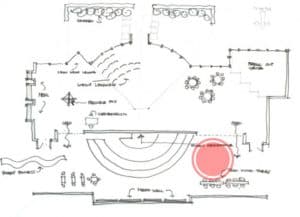21st Century Classroom
EDUCATIONAL DESIGN | 21st CENTURY CLASSROOM As trends in education and learning environments evolve the design of the 21st Century Classroom must adapt as well to foster differentiated learning and enhance the learning process. Creating safe and flexible classroom spaces while utilizing technological advances are imperative as one begins the design process. Central to the design process the design team must listen to the specific needs of educational institution in order to meet their unique academic needs. Illustrated below the diagram addresses the ability for the teacher to work with content materials, varied processes, activities, and allows the students to work in flexible spaces which best fit their individual learning styles. ACOUSTICS Non-typical shapes are utilized in order to enhance acoustics, which improve focus and student concentration and focus. It is imperative each student is given an environment, which allows him or her the opportunity to perform at the highest level. LIGHT + AIR Operable windows allow a breadth of light and air which are critical to a high quality classroom environment. Fresh air and natural light enhance students’ ability to focus and shading devices can be used to minimize glare. BREAKOUT SPACES Classrooms provide a variety of learning spaces for a collection of learning and teaching styles. Having dedicated breakout spaces will create environments, which welcome all learning styles. SMALL GROUP + INDIVIDUAL LEARNING No two students learn the same way. Small group and individual work areas have a variety of seating types and work surfaces to accommodate students’ varied comfort levels and work styles. COMMUNITY GARDEN Including a community garden extends the classroom beyond the walls of the school and outdoor learning curricula can easily be incorporated into the school day. LARGE GROUP DISCUSSION + PERFORMANCE SPACE The large group presentation area has uniform seating and a […]

